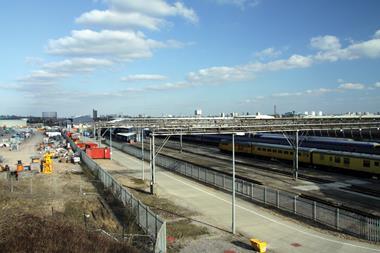Mipim 2016 seemed a watershed moment in a number of ways - and not just for the rain.

Discussion was dominated by Brexit, the rise in stamp duty and the likely identity of the next London mayor.
For industrial property in London both the event itself and simultaneous Budget announcements confirmed an important shift in emphasis. The Greater London Authority (GLA) and key London councils are recognising not only the importance of our sector as a vital generator of jobs but also the fact that London needs both jobs and homes.
There had been encouraging signs last August. In an article for Property Week (27.08.15), deputy mayor for housing and land at the GLA, Richard Blakeway, called for better integration between residential and industrial uses.
Blakeway signalled that “many activities on industrial land are far from industrial”, recognising that the sector today encompasses sophisticated creators of high-tech goods, business services, research and development and the logistics facilities located near homes to enable online deliveries. At Mipim we saw the results of that understanding.
One of the most significant moments for the London industrial sector so far this year came when the government announced plans to transfer both public and Network Rail-owned land at Old Oak Common into the hands of the Old Oak and Park Royal Development Corporation (OPDC). The OPDC’s new model of the area, unveiled at Mipim, radiated purpose.
The Crossrail and HS2 interchange at Old Oak Common has the potential to be the ‘Canary Wharf of the west’, with mixed office and residential accommodation capable of transforming the area.
But with a co-ordinating body that sees the benefits of an integrated approach to jobs and homes, and possesses full-scale planning and land ownership powers across the wider commercial area of Park Royal, the opportunity to enhance infrastructure and land use to significantly improve what is already the best industrial location in Europe is immense.
That’s why SEGRO, as the major owner of industrial assets in Park Royal, has an obligation to work with the GLA to come up with innovative solutions to enable Old Oak Common and Park Royal to meet the needs of London’s expanding population - for more office space and homes, as well as to ensure that the production and logistics facilities that keep the capital supplied also participate in the transformation.
To transform the area, some industrial uses will need to be relocated, which will not be easy with a scarcity of available land. Innovative solutions that create more intensive use such as multi-storey warehousing - similar to schemes in the Far East and Paris - may be the answer.
And it’s exciting to see London boroughs participating in this ethos of ‘homes with jobs’ too. Our recent joint venture with the GLA, East Plus, covering 100 acres within the boroughs of Barking and Dagenham, Newham and Havering will see us working closely with the unitary and local authorities to ensure that a combination of industrial and logistics space is integrated with the ambitious residential redevelopment of Barking Riverside, led by L&Q and Countryside.
In Hillingdon, a former Nestlé coffee factory in Hayes will be brought back into productive mixed use by a combination of our industrial and Barratt’s residential skills. We’re working on a similar initiative in Enfield.
This is the future, in London as well as in major cities across the UK. And while both Mipim and parts of the Budget proved stormy, both recognised the importance of the industrial sector, and the need to preserve and enhance its contribution.
Andy Gulliford is chief operating officer at SEGRO




























No comments yet